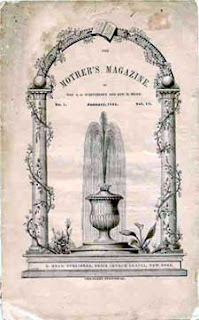Early Magazine Covers -Where less extravagant and detailed than
current common magazines, and where characterized by looking or being
the table of contents of the magazine. They simply had the date
and name of the magazine, and brief publication information. Earlier
magazines didn't even have a cover sometimes. They started a story, or
news article right on the from page. Some, as preciously stated, where
not covers but a simple table of contents. These early magazine covers
evolved into having more pictures and more description, and the latest
early magazines, began to illustrate and foreshadow what future
contemporary magazine covers would begin to look like.
Poster Magazine Covers -Where highly characterized by having a
title and a big picture. These magazines had a large picture cover most
of the magazine, and the title was typically printed right on top of the
picture not quite as big as most titles are today. The date and
publication information was printed in the top corners in significantly
small letters. In these magazines the large illustration was the most
important factor of the cover because it was bold and stander out, which
made readers remember the magazine covers more than previously. The
picture illustrated the topic or theme of the magazine, and carried this
theme to the viewers and readers. This type of magazine cover is sort
of a classic among magazine covers, and is viewed as the original
classic format.
Pictures Married To Type -Magazine covers, where a combination of
the large bold main picture and the beginning of cover lines. Yes. It is
true that cover lines where seen and common earlier in the history of
magazines, but not until this type of magazine cover came to be, where
they significantly important and significant to magazine covers. These
magazines featured the large image, the title (which became bigger than
in poster covers), and these cover lines which drew the readers into the
contents of the magazine, which wasn't really done (or not in the same
way) previously before. These covers began to play around and use
technical skills. They where no longer just pictures, titles, and cover
lines. They began to transform into a form of art, a form of decor, of
placing and positioning words shapes, pictures, and colors and
backgrounds into the perfect way to create an appealing cover.
In the Forrest words -Magazine covers where a form of revolution
in the history of magazines. These new magazine covers completely
changed and transformed magazine covers into an intense combination of
creative images and bold, big, creative cover lines. Cover lines in
these magazines where more intents and more important than in previous
magazine covers. In this cover format both cover lines and pictures
became equally (or closely) important. More information is reveled in
the cover lines of these magazines, and the design of these covers is
much more flexible than previously.




No comments:
Post a Comment